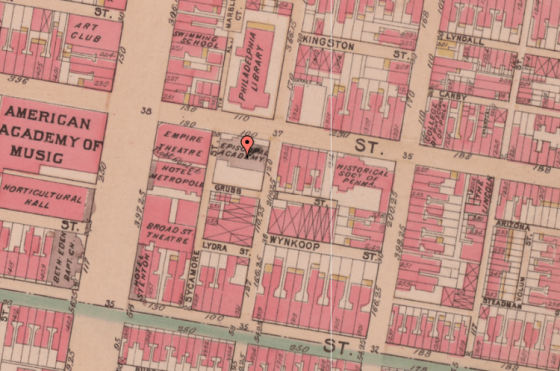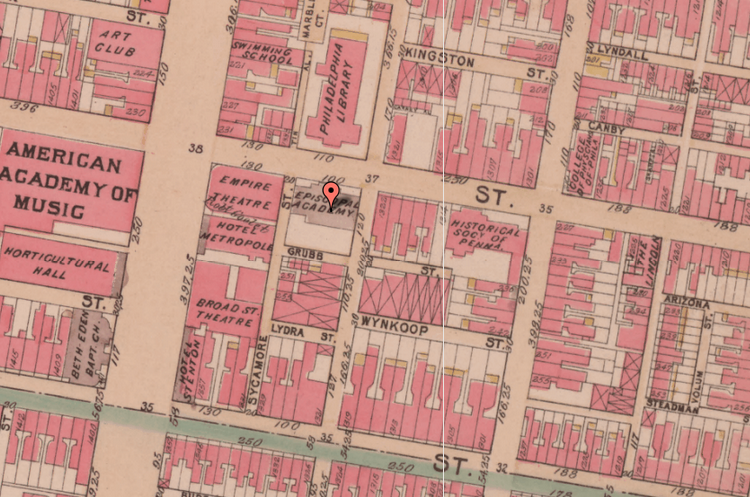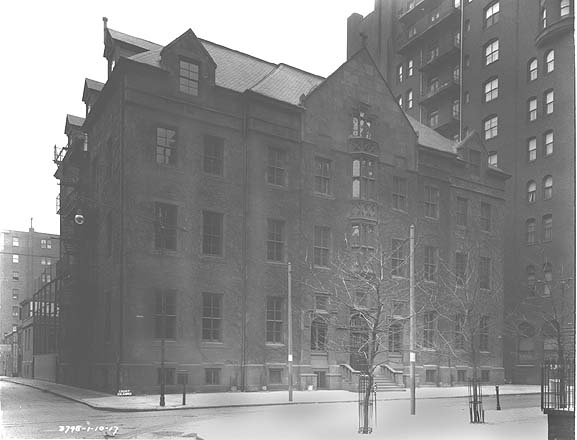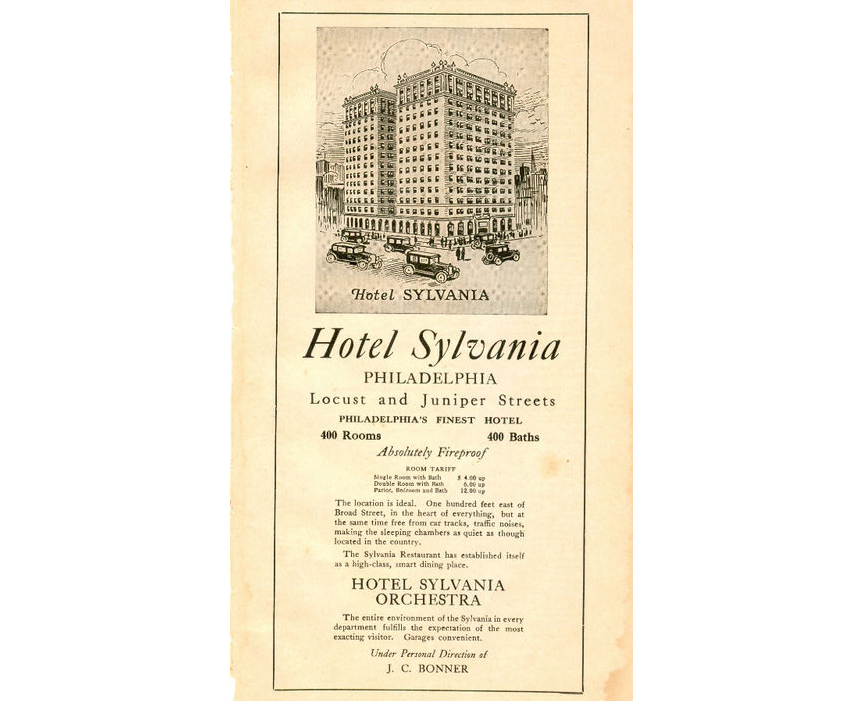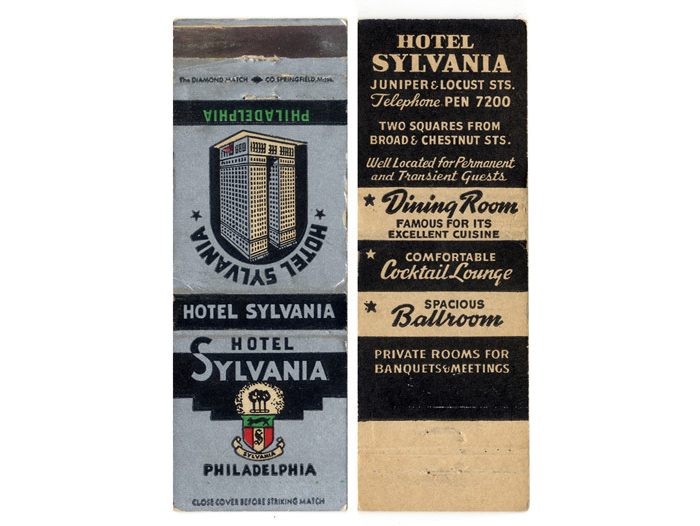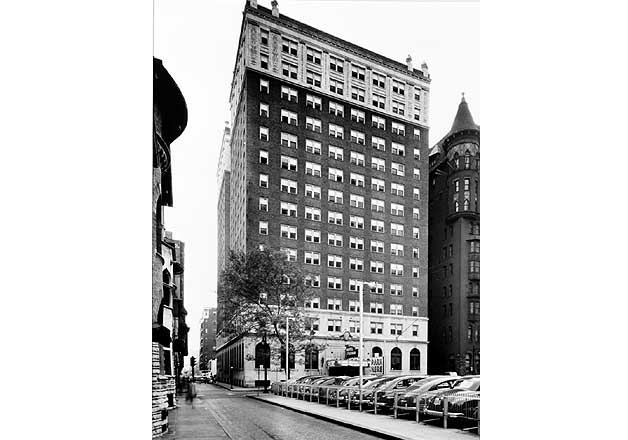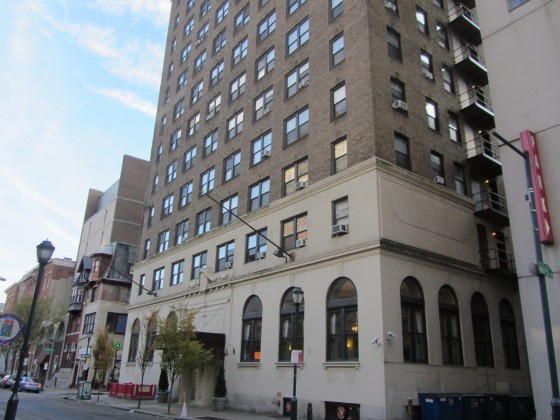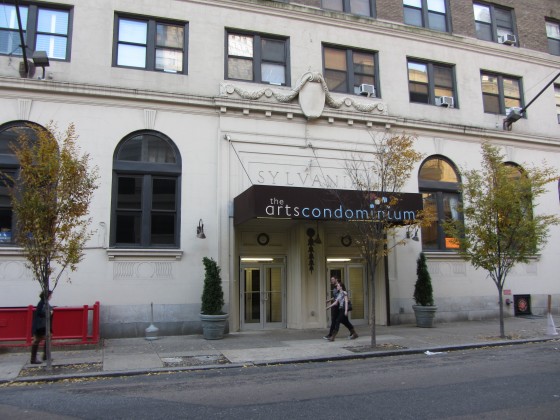The building at 1324 Locust Street offers housing and event reception less than a block from the Avenue of the Arts. But records show that long before this Art Deco structure was erected, the address served as the Academy of the Protestant Episcopal Church. Opened in 1850, the Academy’s location is confirmed here below in a photo taken from G.W. Bromley’s 1895 Philadelphia Atlas.
According to George Abishai Woodward’s Philadelphia and Its Environs: A Guide to the City and Its Surroundings, the Academy was “one of the leading preparatory schools of the city.” The Academy is shown here below in a 1917 photo taken from the Bryn Mawr College website.
In 1921, according to Wikipedia, the Episcopal Academy moved to Lower Merion, making way for the Hotel Sylvania. Built in 1922, the Sylvania was the second largest hotel in the city at the time of its opening and it quickly became a popular destination for members of Philly’s organized crime families. Indeed, among the more colorful of its long-term guests, Philly Neighbors tells the story of boxing promoter and bathtub bootlegger Max ‘Boo Boo’ Hoff, who ran a successful hooch business out of a suite on the Sylvania’s second floor. The 1928 advertisement below is borrowed from a website called Wookmark and sports the catchy slogan “the entire environment of the Sylvania in every department fulfills the expectation of the most exacting visitor. Garages convenient.”
The Sylvania remained popular even as the prohibition era ended, largely by virtue of its proximity to Broad Street, a point which is pronounced in all of its print advertisement materials. So is this noted on the undated matchbook shown here below. Taken from Match Story, it describes the hotel as “well located for permanent and transient guests.”
The Sylvania remained in operation for the next several decades, as demonstrated by the photograph here below, taken from the Bryn Mawr College website. This shows the Sylvania Hotel in 1948.
With the 1970s came recession and a sharp decline in the city’s tourism appeal. Many of the grand hotels that occupied this neighborhood in the first half of the century were felled during the 70s and 80s. The Hotel Sylvania was among the casualties, though the building itself would survive in fine condition. The Sylvania would be converted into the Arts Condominium, catering to the bohemian set of apartment dwellers particular to the Avenue. In addition to its preservation of the original edifice, the Arts Condominium, in 2008, invited an external contractor to convert the hotel’s original first-floor ballroom and theatre into the stunning present-day Arts Ballroom, a reception hall featuring catering by the Stephen Starr Company.
–David Tomar

